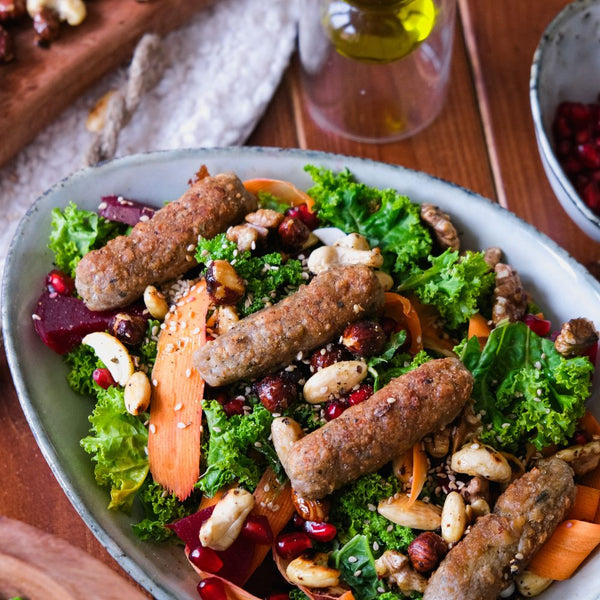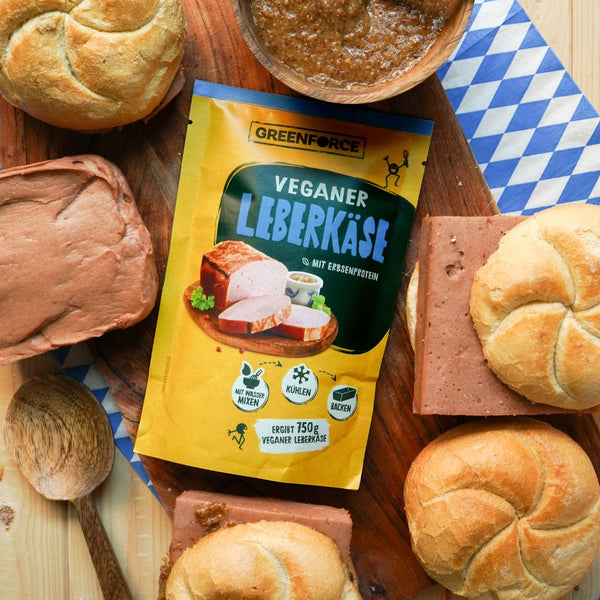Every year, 4.2 million tons of milk are in circulation to meet the per capita consumption in Germany of over 118 kilograms. Just like humans, animals can only produce milk when the female animals are pregnant and have offspring. The milk should actually serve their babies - and not us humans.

About the cow
Did you know that cows are very intelligent animals? They have long-term memory and can learn from other cows. They also develop lifelong friendships and, like us humans, grieve the loss of group members. They also have a very close connection with their children. Unfortunately, many of these cows are exploited as dairy cows and live in confined spaces on factory farms.
The dairy industry and animal welfare
Because we humans consume such large amounts of dairy products, cows are forced to perform at their best. Under natural conditions, a cow would only need 8 liters of milk per day. However, high-performance cows are trained to produce more than 20 liters per day.
In industrial milk production, cows are artificially inseminated so that they can produce milk. Like us humans, a pregnancy lasts 9 months. After birth, the baby is taken away from the mother within 48 hours because the milk produced is intended for us humans. 6-8 weeks after birth, the mother is artificially inseminated again. These extreme performances that the cow has to perform are comparable to the strain of 1.5 marathon runs per day.
The high milk production makes the cows more susceptible to diseases such as udder infections. Due to low milk prices, it is often not worth paying for high medical costs for farmers. Instead, they are sorted out for slaughter, which means the average life expectancy is only four to five years.
Milk consumption and environmental protection
How harmful is milk consumption for our planet? In order to ensure that the cows perform at their best, they need a lot of feed. Some rainforests are cut down for this feed, mainly to create pasture and space for growing feed. 75% of the world's soy production is used for animal feed. Germany is one of the top three importers of soy grown in Brazil.
1 kilogram of milk consumes almost 2.5 kg of CO2e, while 1 kilogram of oat drink only uses 0.75 kg. Oat milk also performs significantly better when it comes to water consumption: 1 kg of milk requires around 628 liters of water, while oat drink only requires 48 liters.
When choosing alternative milk, however, the environmental balance should be taken into account. Because not every alternative milk means fewer greenhouse gases and less water consumption. For example, almond milk performs worse than milk in terms of environmental impact.

Conclusion:
A large part of the milk is produced on factory farms. The dairy cows suffer from the large amounts of milk they have to produce. We should consume milk more consciously or use alternatives.
Oat drinks are becoming increasingly popular because oats are a regional product and can be grown in Germany. Using oats can save a lot of water and transportation emissions. In order to protect the environment and animals, alternative products should be used. But you should also pay attention to the choice of oat drink. Many milk alternatives contain preservatives and other additives such as oil, sugar or salt. Try our organic oat drink now - natural made from 100% organic whole grain oat flour.
Sources:
- https://www.quarks.de/gesundheit/ernaehrung/sind-milchalternativen-gesuender-und- Umweltiger/
- https://www.peta.de/themen/milch/
- https://proveg.com/de/5-pros/tiere/milchkuehe-kuhzucht-milchproduktion/
- https://www.tierschutzbund.de/aktion/mitmachen/verbrauchertipps/milch/
- https://www.tierschutzbund.de/information/background/landwirtschaft/rinder/milchkuehe/
- https://de.statista.com/statistics/data/study/1179343/umfrage/wassersumption-von-kuhmilch-und- Vegetable-milk/

















